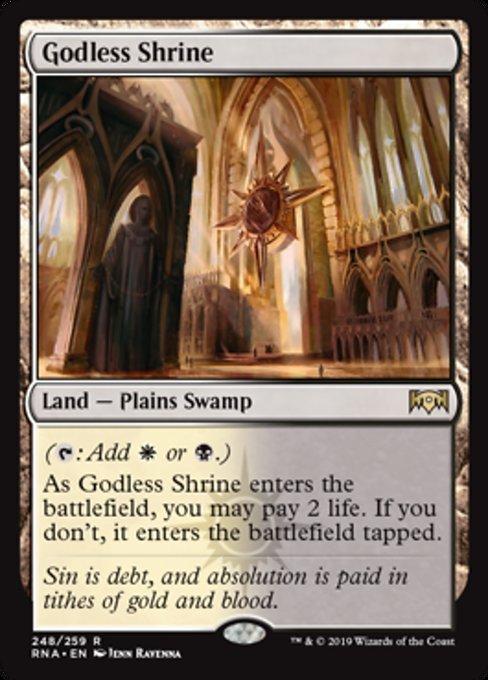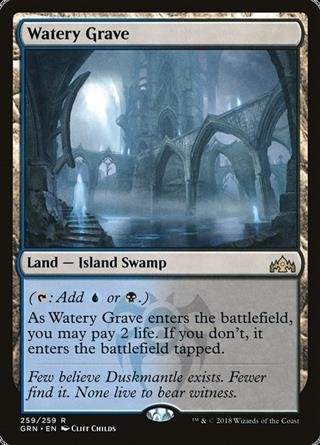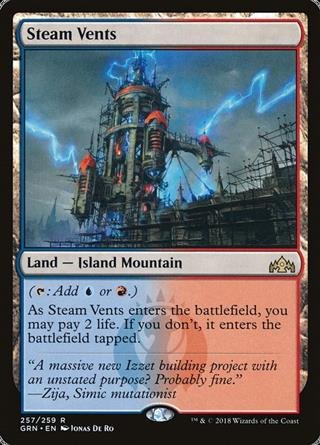How To Build, Maintain, And Play A Cube In Magic: The Gathering

Cube is one of the most fun ways to play Magic: The Gathering and the process of building a cube is highly rewarding. That said, it can be quite an undertaking, especially if you've never done it before. After all, a lot goes into it - Such as picking a theme, choosing a couple of hundred cards (at minimum), and keeping everything balanced. Worry not, though; I've got you covered. Today, I'll cover building, maintaining, and playing a cube in MTG.
I'll also discuss the different sizes of cubes, format variants (such as commander and pauper cubes), some tips and tricks, and a list of resources and communities devoted to the format. So, let's get started.
How To Build A Cube In MTG
Before picking themes, finding cards, crafting archetypes, etc, let's start with the basics to ensure we're all on the same page.
What is a Cube?
In Magic: The Gathering, a "cube" refers to a custom-built set of cards assembled for drafting. Unlike traditional booster packs created and themed by WOTC, the cards in your cube will be handpicked by you. So, you select which cards, themes, and archetypes to include, giving you a unique and tailored drafting experience.
Essentially, you build your own set out of existing MTG cards and draft it with friends. This "build it yourself" limited format creates an enjoyable draft environment, offering strategic depth, replayability, and a reflection of the creator's vision for the game/cube.
How To Draft A Cube
Aside from a few variables (such as the number of players and the size of your cube), once it's completed, you'll draft it like you would any other set. Players will get (usually) three randomly selected 15-card "packs" taken from the cube. Each player picks one card from their pack and passes the rest to the next player. This is repeated until all the cards from the packs have been drafted. Players then build 40-card (minimum) decks from the cards they drafted and play against one another.
You May Also Like: How To Draft Better - Five Tips To Improve Your MTG Draft Skills
Building Your Cube
As mentioned, a lot goes into building a cube. To make getting started less daunting, I suggest you break the process into a few steps, which I'll cover below. Let's start things off by picking a size for your cube.
Choose Your Cube Size
Cubes usually come in three sizes. The number of cards determines how many players can draft, what percentage of the cards are used in each draft, and how much synergy and variance you get in your games. Here are the key takeaways:
360 cards (small cube)
A cube of this size can be drafted by four to eight players. When drafted by eight players, every card within the cube will be used. Smaller cubes like this offer a more consistent experience because you'll likely use all your cards most of the time. As a result, cubes of this size are good for highly synergistic and even combo archetypes.
As you move up to cubes with more cards, some portion of them won't be drafted in each game. This makes it harder to include combos and things because there's a chance that crucial pieces will end up in the unused portion.
540 Cards (Medium Cube)
A step up from 360 card cubes is 540 cards, which I consider the most typical for most players. At this size, up to 12 players can draft. However, you can still draft with eight players as well, and when you do, 1/3 of the cards won't be used. As mentioned, this makes combos and things less playable. But on a positive note, it adds variety to your games because you'll have a slightly different card pool each time.
720 Cards (Large Cube)
A 720-card cube is usually the biggest and can support 16-player drafts. This usually means two "pods" of eight players. Considering that each pod will only be using half the cards in the cube combo and super synergistic strategies become even more problematic. That said, if you frequently have enough people to play, this is a great option... Just stick to more linear strategies, and you'll be fine.
Picking Themes And Archetypes
Once you've chosen a size for your cube, you can start thinking about themes, archetypes, and cards. And the sky is the limit here. Now is also a good time to mention a few things - First, cube is a "casual" format. This means that there are no concrete rules. You can do whatever you and your playgroup are good with.
That said, there are some generally accepted guidelines. For example, most cubes are singleton. So, they'll only have a single copy of each card.
Another common theme is including an even number of cards for each color, including non-basic, mana-producing lands for all your color combinations. So, if you have all ten color pairs in your cube, you'd probably want to be consistent and include a land (for example, a shock land, fetch land, or check land) for each. These are good general practices, but again, there are exceptions to these "rules."
A very general guideline for a 360-card cube could be:
- 50 white cards
- 50 blue cards
- 50 black cards
- 50 red cards
- 50 green cards
- 50 multicolored cards (five of each color pair)
- 30 nonbasic lands
- 30 artifacts
Themes
The theme for your cube can be anything that interests you as a player. You can, of course, do builds that don't have an overarching theme. However, choosing a theme for your cube can be helpful as a beginner builder because it gives you a strong indication of what archetypes and cards you'll add.
Furthermore, if you or your play group are inexperienced drafters, a clear theme can help give clear ideas of possible deck ideas.
Some examples of themes could be:
- Mechanic-Based Builds - All cards in the cube synergize with a particular mechanic, such as landfall flashback
- Tribal Themes - Built around tribes for each color (Zombies, Merfolk, Goblins, Eldrazi, etc.)
- Set Themes - A cube built using cards from particular sets and blocks in MTG (Innistrad, Kamigawa, Ravnica)
- Format-Themed Builds - For example, a Modern cube would feature only cards legal in Modern
- +1/+1 Counters Or Artifact Themes - Where most cards (regardless of color) synergize with the same thing
- Mono-Colored Themes - A cube built with a single color, using all the styles it offers
There are no wrong answers here. The sky is the limit, and you can do anything you like. Again, you don't have to have a specific theme, but it does help point you in the right direction when getting started.
Archetypes And Cards
Ok, you've chosen a size and possibly an overall theme. Now, you're onto the fun part - Adding cards! Depending on what you've decided to build, this can be pretty straightforward initially. I like to start with all my favorite cards that fit my theme. There are tons of great resources for finding cards that fit specific themes.
I use the advanced search features on Scryfall, where you can filter cards by type, color, keyword, set, rarity, and more.

Instead of cards that fit a loose theme, you'll likely want to establish some archetypes for each color pair within your cube. You can start by looking at the MTG color combinations to understand what each pair does well. If you're a more experienced player, you may already have some ideas for how you want each color pair to play in your cube.
Versatile Cards
As you pick draftable archetypes for each color combination, you can start to include cards that lend themselves to multiple strategies. Let's say you've landed on an aristocrat (sacrifice) strategy for black/white and reanimator for blue/black. Cards like Bone Shards and Victimize
and Victimize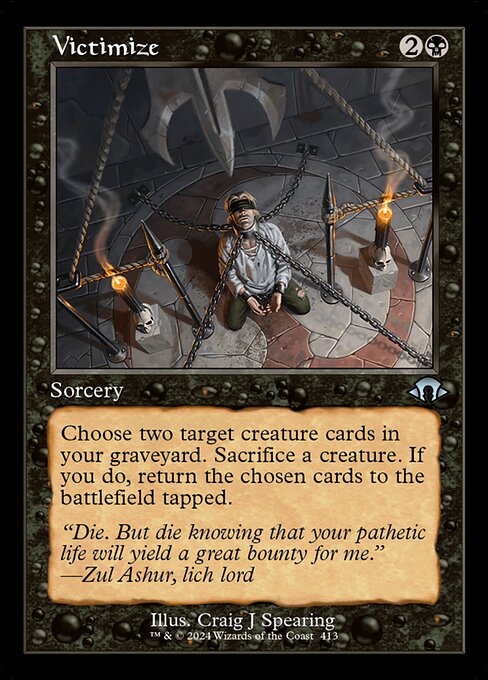 will be valuable pickups for both.
will be valuable pickups for both.
The sacrifice portion could trigger things like Cruel Celebrant in B/W and be used to discard reanimation targets into the graveyard to bring back with Goryo's Vengeance
in B/W and be used to discard reanimation targets into the graveyard to bring back with Goryo's Vengeance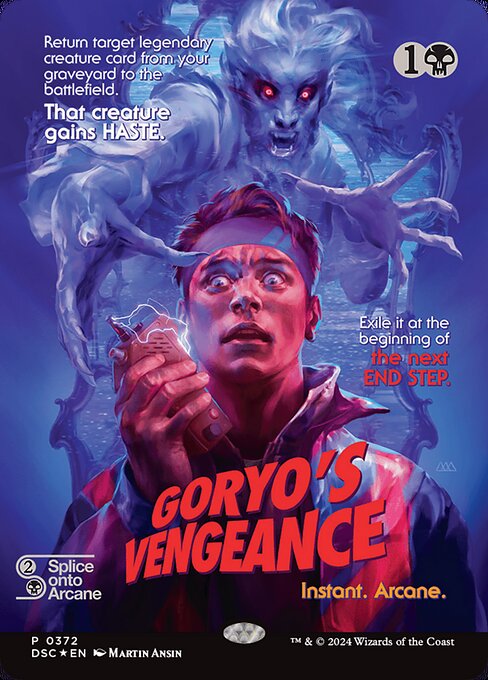 . Having synergistic cards that can pull double duty and provide for multiple builds makes your cube greater than the sum of its parts.
. Having synergistic cards that can pull double duty and provide for multiple builds makes your cube greater than the sum of its parts.
Mana Curve
Mana curve refers to the distribution of mana costs of cards in a deck. The idea behind your "curve" is to have a balanced number of cards with different mana costs to ensure you can play a card on every turn of the game. This means that you generally need more copies of cards that cost less and fewer copies of cards that cost more.
.png)
Image By WOTC
For cubes, you want most of your cards around the two- or three-mana range, with the number at each mana cost declining as you go higher. So, for example, you may have 17 one-mana creatures, 77 two-mana creatures, 123 three-mana creatures, 113 four-mana creatures, 80 five-mana creatures, 42 six-mana creatures, and 30 seven-mana creatures.
These are just example numbers, but you generally want the highest number of cards at two and three mana and tapering off in both directions from there. Some things to consider here are cards with alternative casting costs. For example, let's say you include Fury , Solitude
, Solitude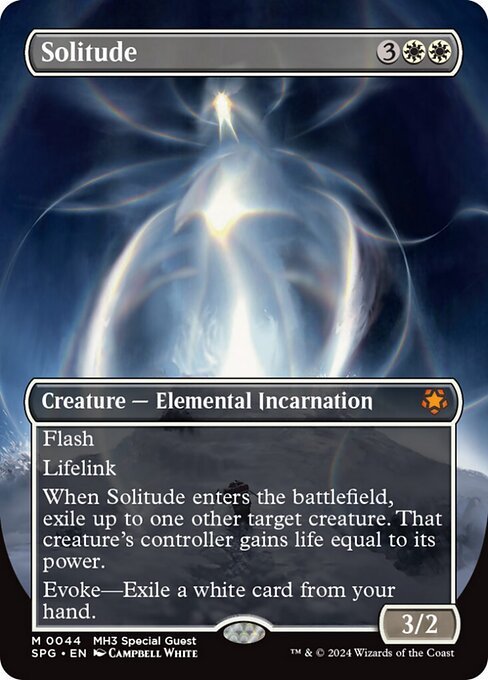 , Greif, Force of Negation
, Greif, Force of Negation , and Force of Vigor
, and Force of Vigor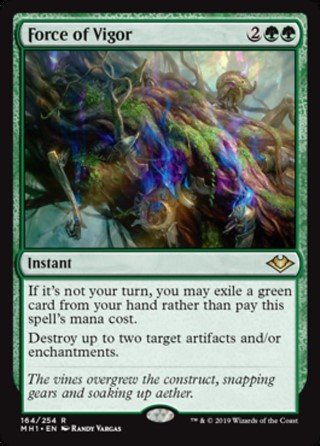 in your Modern cube.
in your Modern cube.
You'll want to look at these cards in terms of what turn they can reasonably be cast instead of the casting cost on the card.
How To Update Your Cube
Occasionally, new cards better fitted for your cube than current cards will be released, and you'll want to swap them in. My only advice here is to keep your mana curve in mind. If the card you're adding is a five drop, try to take a five drop out. You want to avoid, for example, taking out a three-mana spell and adding a seven-mana spell, as doing so could throw off the amount of early playable picks players have.
Aside from new releases, you may also make changes based on underperforming cards. As you and your friends draft it may become clear that certain cards don't play as well as you'd hoped. In this case, you'll want to replace them with something else. And again, the main concern will be to keep your curve and synergies in mind when finding replacements.
Cube Variations
Aside from the traditional draft environment of a cube, there are a few fun variations, which I'll cover here.
Commander Cubes
You can build commander cubes that draft like a Commander Legends set. These cubes will need more legendary creatures to serve as commanders. Many EDH cubes allow players to start with a copy of Sol Ring , Command Tower
, Command Tower , Commander's Sphere
, Commander's Sphere , and The Prismatic Piper
, and The Prismatic Piper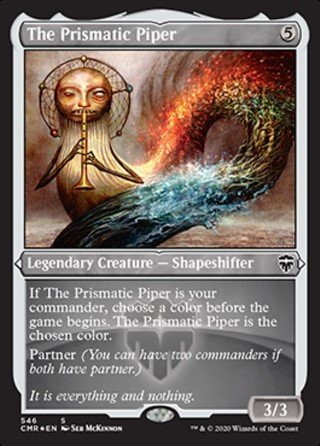 to help decks along and give a commander feel.
to help decks along and give a commander feel.
Usually, cubes like this have 1032 cards, allowing up to 16 players (four pods of four) to draft and play.
Set Cubes
Set cubes are built a bit differently and are made to recreate the draft experience of a particular MTG set. When building a set-themed cube, you'll usually include the following:
- Four of each common from the set
- Four of each uncommon from the set
- One of each rare and mythic rare from the set
These types of cubes aren't as creative and customizable, but they do allow you to draft your favorite sets over and over without buying draft boosters.
Two Player Cubes
Two-player cubes (also known as 'Robert" cubes) have 180 cards and can be played by as few as two players. There's a fantastic article on the logistics of such a cube called - The Proper Way To Do Two-Player Cube Drafts, where the author breaks it down in great detail, and I suggest you check it out.
However, here are the draft rules that make the draft feel authentic with only two players:
Minneapolis Draft is a two-player draft format where both players make eight packs of seven cards. Each player starts by simultaneously opening their first pack without showing the contents to the other player, drafting one card face down, and then trading their first pack with the other player. Then each player takes two cards from the other player’s pack and trades back. Finally, players take an additional two cards from the pack they had opened and the last two cards in each pack are discarded face-down from the draft.
To reiterate, that’s one first pick, two picks from the other player’s pack, and then two last cards from the pack you opened before discarding the remaining two cards from the draft. Players continue this process until all eight of their packs have been drafted. From here players add any number of basic lands to their deck and play some 40-card Limited Magic.
Cube Resources
If you're interested in cubes, I recommend checking out Cube Cobra. It allows you to build, analyze, tweak, play, and share your cube. It's one-stop shopping for a cube builder and offers all the tools you could need in an easy-to-view, organized way. You can also view and play with other people's cubes:
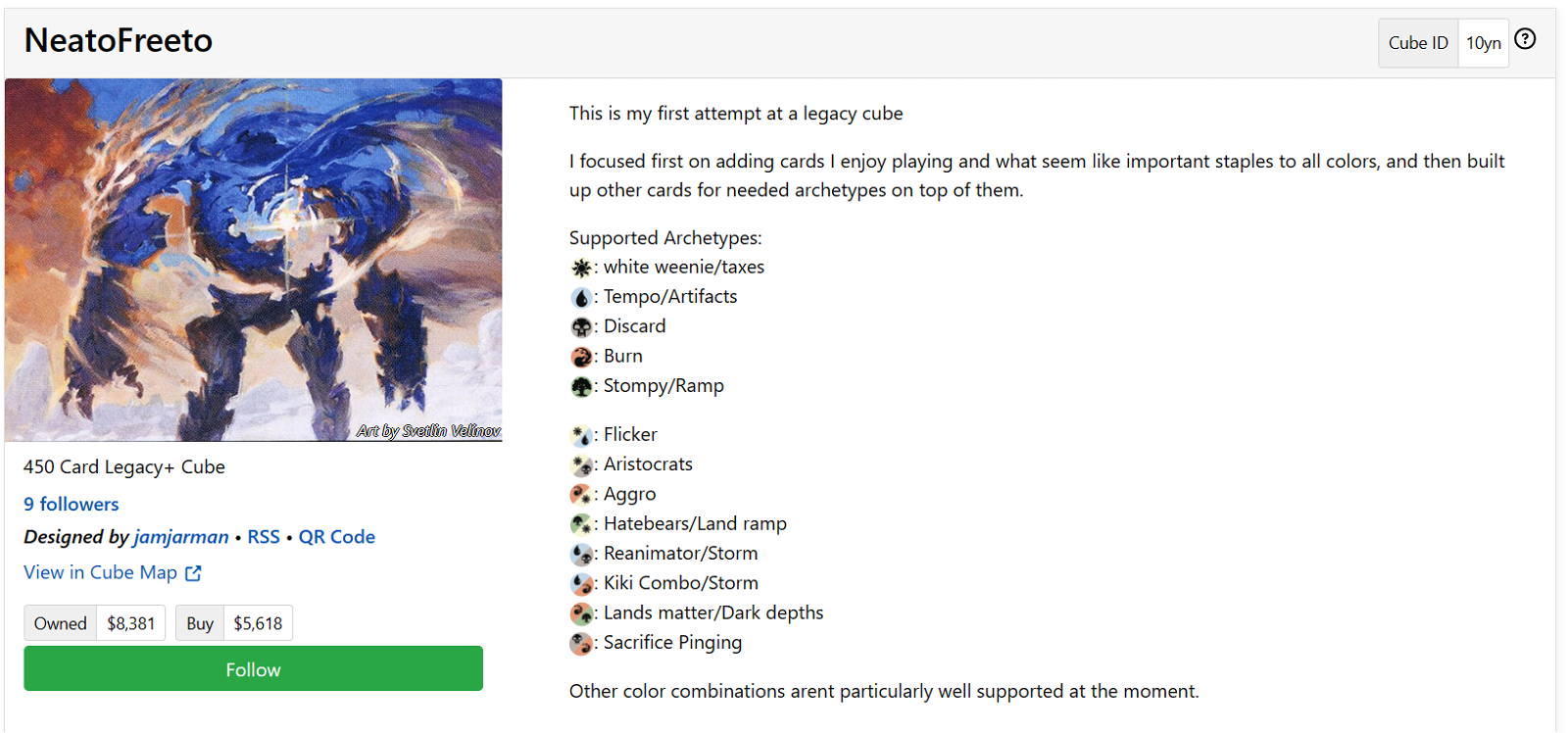
As you can see, the uploader can include the themes and archetypes they've included. You can also view more in-depth stats, such as how many cards each color has and the mana curve of the cube:
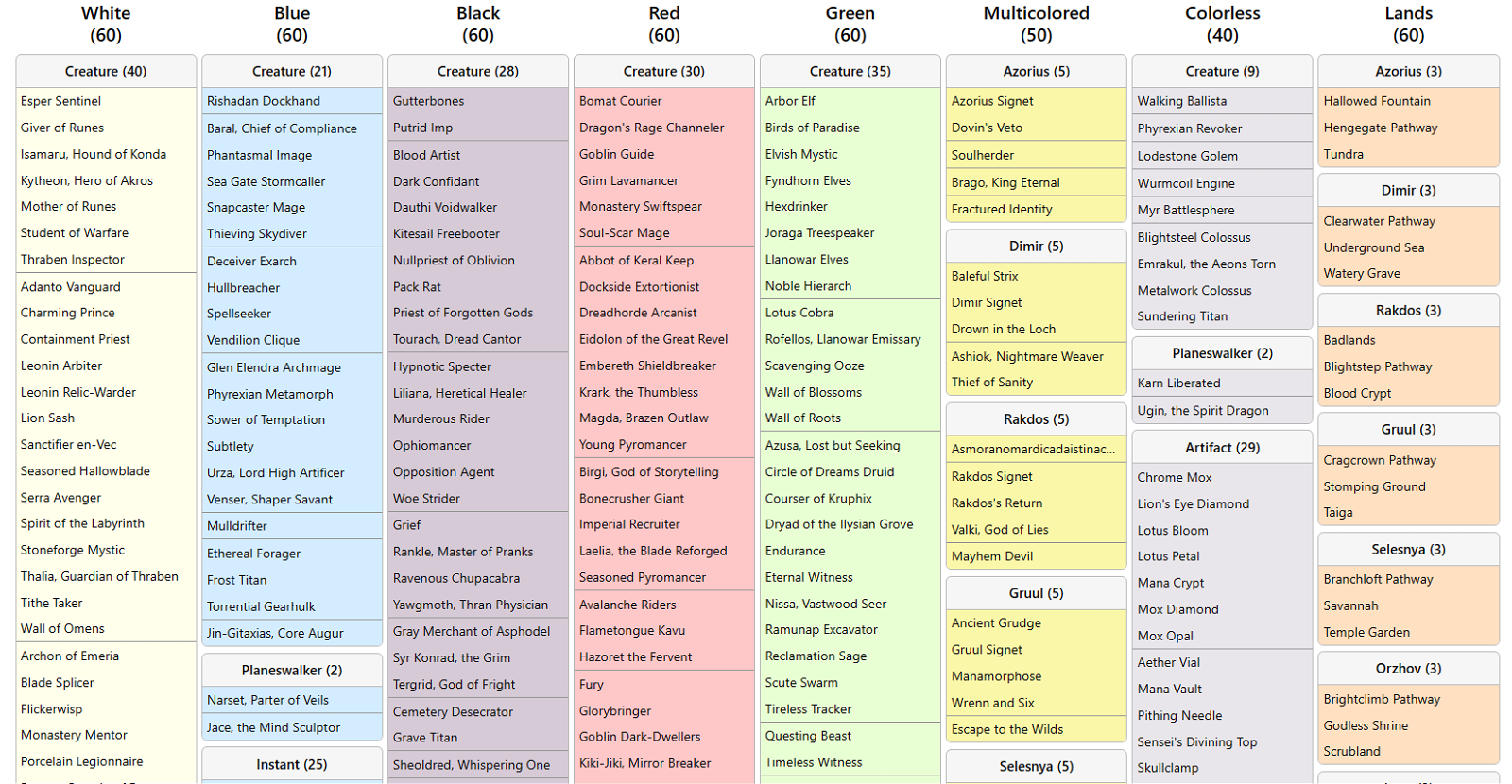
Conclusion
There you have it, my friends, everything you need to know about how to build a cube in MTG. You should have a good idea of how to pick your themes and archetypes, the different sizes of cubes, other ways to play, and some of the most helpful resources. The only thing left to do now is get out there and build one.
So, happy building! Comment below if you have any questions, and I'll get back to you.


